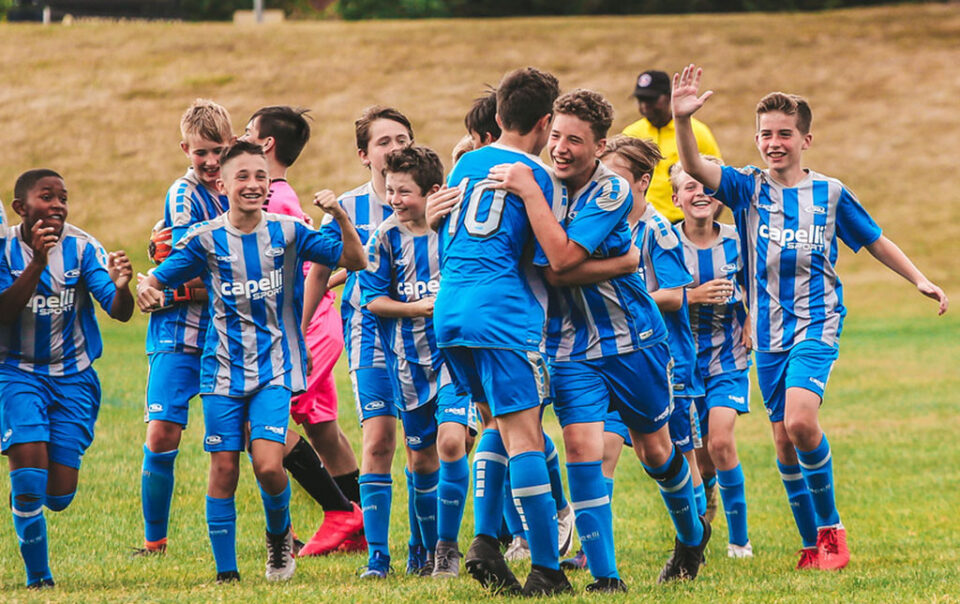This article is based on February’s Educational Campaign On Coaching The Bantam Division (U9-U10).
Along the month of February we focused on learning about the Bantam Division (U9-U10 age groups). Find below a list of the events covered and some of the takeaways we extracted from interviewing experts and analyzing some important articles (among others).
- We started the month analyzing the Rush Way Guide for the Bantam Division, a comprehensive document with age group specific recommendations and applications of the Rush Way.
- Our second event found us talking to Sam Snow & Vince Ganzberg, who shared some of their cornerstone concepts to coach this age group, through an enriching Webinar hosted by Chris P.
- Megan McCormick stepped in right after, sharing an important piece about why a ‘Play-Practice-Play’ Method is preferred when working with the Bantam Division.
- Building off of this base, Chris P. shared a U9-U10 session on The Rush Coaching Manual to improve the players ability to score using a Play-Practice-Play design.
- Lastly, Pablo Toledo hosted a 2 hours long open-mic meeting with fellow Argentinian and world renowned youth coach Rubén Rossi on Building a U9-U10 Curriculum.
These were some of the main takeaways:
1) The Game Is The Teacher: It sounds like a cliché. We all say it, yet not everybody really understands what it means. The game is the teacher because technique and skill are two different concepts, in which the second relates to the effective application of the first in a game setting. It is only in the complexity of the game in which the skill can be developed. This is what Ruben Rossi wanted to highlight as well when saying: “Kids train more and more and play less, so there are fewer and fewer creative players. The fundamentals of individual technique are learned from the game, they cannot be trained out of it. Once the child has learned to play, it can be helped from the conceptual point of view”.
2) Why we start with Play: Starting a session with play is another important tool in the toolbox of coaches working with any age group. Along with so many other benefits, it can help us increase the value of coaching. In more traditional “progressive methods” the session starts simple and gradually becomes more complex. If players are finding mostly success as a task or activity starts, they have little reason to tune in and pay attention to coaching. Starting with the game allows coaches to pose questions and point out challenges, allowing players freedom to explore and experience failure. This can make them more likely to pay close attention and work to implement coaching points that could turn their failure into success.
3) Why a Game Based Approach: One of the main reasons why we encourage games is because they add a decision making element. It also gives (if well applied) contextual fit to check for understanding. We can modify the training session based on rules, equipment, space and time to create the desired environment.

4) Remember That Kids Get Tired Of Working, They Never Get Tired Of Playing: The title says it all, so we’ll only leave a passage from Mark Twain’s Tom Sawyer’s Adventures – “Tom said to himself that it was not such a hollow world, after all. He had discovered a great law of human action, without knowing it – namely, that in order to make a man or a boy covet a thing, it is only necessary to make the thing difficult to attain. If he had been a great and wise philosopher, like the writer of this book, he would now have comprehended that Work consists of whatever a body is obliged to do, and that Play consists of whatever a body is not obliged to do. And this would help him to understand why constructing artificial flowers or performing on a tread-mill is work, while rolling ten-pins or climbing Mont Blanc is only amusement. There are wealthy gentlemen in England who drive four-horse passenger-coaches twenty or thirty miles on a daily line, in the summer, because the privilege costs them considerable money; but if they were offered wages for the service, that would turn it into work and then they would resign“.
5) Have a clear “picture” of learning: Before executing a session, it’s important that coaches take the time to ask themselves a few simple questions highlighted by Vince Ganzberg:
– What do I want learning to LOOK like?
– What do I want learning to SOUND like?
– What words/actions am I looking for from players?
Knowing what we are looking for before stepping onto the field helps ensure that feedback and coaching is focused and specific. It also allows us to shift our focus away from “what am I teaching” to a much more important question: what are they learning?

6) Know who is in front of you: At every age and stage we must know who is in front of us, so we can understand the characteristics and what to expect from them. We must understand the human development aspects and what children at 8,9, 10 can comprehend. Vince spoke about ‘letting players pack their own bags’ and owning the experience. For this age group we must observe and have the players show us what they know. Using of “show me” or “let me show you” are always simple and effective ways of checking for understanding. Revisiting the Rush Way Guide for the Bantam Division for more details and characteristics of this age group is always a good idea, especially if you haven’t been coaching this age group for some time.
Stay tuned, coach.









